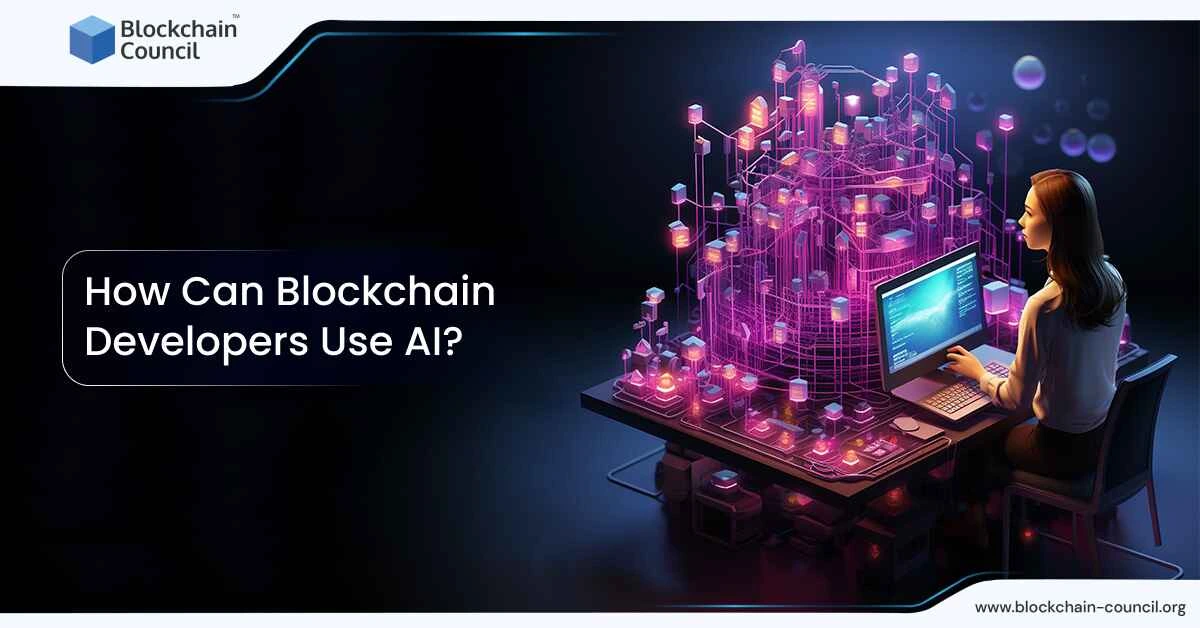
- Blockchain Council
- November 29, 2024
Summary
- Blockchain developers can integrate AI into smart contracts for complex operations.
- AI enhances Blockchain security by detecting threats in real-time.
- Cross-industry applications for AI-powered Blockchain solutions.
- Blockchain is a decentralized ledger for recording transactions.
- AI is a field focused on tasks requiring human-like intelligence.
- Benefits of combining Blockchain and AI include enhanced security, efficient data management, and versatile smart contracts.
- Blockchain fundamentals involve decentralized ledger systems, consensus mechanisms, and smart contracts.
- AI types include Artificial Narrow Intelligence (ANI), Artificial General Intelligence (AGI), and Artificial Superintelligence (ASI), among others.
- Benefits of combining Blockchain and AI include improved security, enhanced data
- Smart contracts can integrate AI through NLP, predictive analytics, tokenization, and AI-driven governance.
- Use cases for combining Blockchain and AI include supply chain management, healthcare, finance, IoT, and identity verification.
- Challenges include scalability issues, privacy, ethical concerns, and regulatory compliance.
- Future trends include AI-driven consensus mechanisms, AI-powered cryptocurrencies, and AI-powered decentralized applications (DApps).
Introduction
Blockchain technology and artificial intelligence (AI) have been two of the most transformative innovations of the digital age. While they may seem distinct, the synergy between Blockchain and AI presents a world of possibilities for developers. In this comprehensive guide, we will delve into the ways Blockchain developers can harness the power of AI to create groundbreaking solutions.
Blockchain, often associated with cryptocurrencies like Bitcoin, is essentially a decentralized ledger technology. It offers transparency, security, and immutability – making it a natural fit for a wide range of applications beyond finance. On the other hand, AI, with its ability to learn and adapt, is reshaping industries by automating tasks, predicting outcomes, and improving decision-making.
The convergence of these technologies is where the magic happens. But before we explore the technical intricacies, let’s understand why this fusion matters and the potential it holds for developers.
Why Blockchain Developers Should Embrace AI
As a Blockchain developer, you might wonder why you should dive into the realm of AI. The answer is simple: AI can enhance and elevate the capabilities of Blockchain in ways that were once unimaginable.
- Smart Contracts with AI Logic: Blockchain developers can integrate AI algorithms into smart contracts, allowing them to execute more complex and data-driven operations automatically. This opens doors to a new generation of contracts that respond intelligently to changing conditions.
- Enhanced Security: AI can bolster Blockchain security by detecting and preventing threats in real-time. By analyzing vast datasets, AI can identify abnormal behavior on the Blockchain, flagging potential breaches before they escalate.
- Scalability and Speed: AI can optimize Blockchain networks by predicting transaction patterns and optimizing network resources. This can significantly improve scalability and transaction speeds, addressing one of the traditional Blockchain challenges.
- Data Analytics: Blockchain accumulates massive amounts of data. AI can analyze this data to extract valuable insights, making Blockchain more than just a ledger but a powerful tool for decision-making.
- Tokenization and AI: AI-driven algorithms can facilitate the tokenization of assets, from real estate to art. This fusion can democratize investments and create new opportunities for both developers and investors.
- Cross-Industry Applications: AI-powered Blockchain solutions find applications in diverse fields, from supply chain management to healthcare. Developers can be at the forefront of revolutionizing these industries.
Also Read- What Is NFT Gas Fee & How To Calculate It? Explained
What is Blockchain?
Blockchain technology is the backbone of cryptocurrencies like Bitcoin, but its applications extend far beyond digital currencies. At its core, Blockchain is a decentralized ledger that records transactions across a network of computers. It’s secure, transparent, and tamper-proof, making it ideal for various industries.
What is Artificial Intelligence (AI)?
Artificial intelligence, or AI, is a field of computer science that focuses on creating systems capable of performing tasks that typically require human intelligence. This includes machine learning, where algorithms learn from data to improve their performance, and deep learning, which involves neural networks emulating the human brain’s decision-making process.
The Intersection of Blockchain and AI
Understanding the Basics
Blockchain Fundamentals
Blockchain technology serves as the foundation for various applications, including cryptocurrencies like Bitcoin. Understanding its core principles is crucial for developers looking to integrate AI.
Blockchain is a decentralized ledger system: At its core, Blockchain is a distributed ledger that records transactions across multiple computers. This decentralization ensures data security and integrity.
Consensus Mechanisms: Blockchain relies on consensus mechanisms like Proof of Work (PoW) and Proof of Stake (PoS) to validate and add transactions to the ledger. This consensus process ensures the trustworthiness of the data.
Smart Contracts: Smart contracts are self-executing contracts with predefined rules. Developers can use AI to enhance the capabilities of smart contracts, making them more versatile and automated.
Blockchain Structure
Understanding the structure of a Blockchain network is vital for developers aiming to incorporate AI.
Nodes and Decentralization: Blockchain networks consist of nodes, which are individual computers participating in the network. The decentralized nature of nodes enhances security and resilience.
Blocks and Chains: Transactions are grouped into blocks, and each block is linked to the previous one, forming a chain. This structure ensures the immutability of data.
Consensus Algorithms: Developers need to comprehend the various consensus algorithms used in Blockchain, such as PoW, PoS, and Delegated Proof of Stake (DPoS). AI can be applied to optimize these algorithms for efficiency.
How Do Transactions Work?
Artificial Intelligence Basics
Types of AI
Machine Learning Vs. Deep Learning
Benefits of Combining Blockchain and AI
Improved Security
Blockchain’s reputation for providing robust security is well-established. It relies on decentralized and immutable ledgers, making it highly resistant to tampering and fraud. When AI enters the equation, it bolsters security even further. AI algorithms can detect anomalies and potential threats in real-time, helping prevent security breaches and ensuring the integrity of data stored on the Blockchain. This synergy creates a formidable defense against cyberattacks, a critical concern in today’s digital landscape.
Enhanced Data Management
Efficient data management is at the core of AI’s capabilities. Blockchain’s decentralized structure enhances this aspect significantly. By leveraging Blockchain’s distributed ledger, AI algorithms can access and analyze data from multiple sources securely. This not only streamlines data retrieval but also ensures data accuracy and reliability. Businesses can make data-driven decisions with confidence, knowing that their AI models are working with high-quality information stored on an immutable ledger.
Smart Contracts and AI
Smart Contracts, a hallmark of Blockchain technology, are self-executing contracts with predefined rules. When combined with AI, these contracts become even more versatile. AI can be integrated into Smart Contracts to automate complex decision-making processes. For instance, in supply chain management, AI-powered Smart Contracts can autonomously optimize inventory levels based on real-time data, reducing costs and enhancing efficiency. This combination simplifies business operations and reduces the risk of human errors.
Decentralized AI Applications
Blockchain’s decentralization principle aligns seamlessly with the concept of decentralized AI applications. Instead of relying on a centralized authority, these applications operate on a peer-to-peer network, empowering individual users and enhancing transparency. Decentralized AI applications can include anything from decentralized finance (DeFi) platforms to AI-powered social networks. Users retain control over their data, while AI algorithms provide personalized experiences without compromising privacy.
Also Read- Top 5 Web3 Careers For Developers
Tools and Technologies
AI Frameworks for Blockchain
Blockchain Platforms for AI
Data Integration Solutions
To unlock the true potential of AI within Blockchain, seamless data integration is crucial. Developers can employ the following data integration solutions:
- Chainlink: Chainlink provides decentralized oracles that connect smart contracts to external data sources. This enables Blockchain applications to access real-world data for AI-driven decision-making.
- Ocean Protocol: Ocean Protocol facilitates the secure sharing and monetization of data. Developers can use it to access AI training data and algorithms within the Blockchain ecosystem.
- SingularityNET: This decentralized AI marketplace allows developers to access a variety of AI services and algorithms, promoting AI adoption in Blockchain projects.
- DIA (Decentralized Information Asset): DIA provides reliable, crowdsourced data feeds for Blockchain applications. It ensures that AI models receive accurate and up-to-date information.
Smart Contract Development with AI
Smart contracts form the backbone of Blockchain applications, and integrating AI into these contracts opens new possibilities. Developers can achieve this by:
- Natural Language Processing (NLP): Implement NLP algorithms in smart contracts to enable automated contract analysis and negotiation.
- Predictive Analytics: Integrate predictive models to create smart contracts that adapt to changing conditions based on AI-driven predictions.
- Tokenization of AI Services: Create tokens that represent AI services, allowing smart contracts to utilize these services seamlessly.
- AI-Driven Governance: Develop AI-powered governance systems within smart contracts for automated decision-making.
Use Cases
Supply Chain Management
Supply chains are intricate webs of processes, and Blockchain can bring transparency. AI, with its predictive analytics, can enhance supply chain efficiency. Developers can implement AI algorithms to forecast demand, optimize logistics, and detect anomalies in real-time. This synergy ensures smoother operations and minimizes risks.
Healthcare
The healthcare sector benefits immensely from Blockchain’s secure data storage. Integrating AI enables faster and more accurate diagnoses. AI-driven chatbots can provide medical information and assist doctors in making critical decisions. Moreover, patient records remain tamper-proof, ensuring privacy and trust.
Finance and Banking
Blockchain revolutionized finance with cryptocurrencies. AI takes it a step further. AI-driven trading algorithms, fraud detection, and credit risk assessment are changing the game. Developers can create smart contracts for automated transactions, reducing the need for intermediaries.
Internet of Things (IoT)
IoT devices generate vast amounts of data. Blockchain ensures the integrity and security of this data. AI can analyze this data for actionable insights. For instance, in smart homes, AI can optimize energy usage based on historical patterns, making homes more efficient.
Identity Verification
Traditional identity verification methods are often cumbersome. Blockchain provides a decentralized and secure way to manage identities. AI-powered facial recognition and biometric authentication offer seamless and highly secure identity verification. This combination enhances security while simplifying user experiences.
Challenges and Considerations
Scalability Issues
Scaling up Blockchain networks to accommodate AI applications is a significant challenge. As AI requires vast computational resources, Blockchain’s inherent limitations in handling large volumes of data and transactions become apparent. Developers must seek innovative solutions to enhance scalability without compromising the integrity of the Blockchain.
To address this, sharding, a technique that divides the Blockchain into smaller, manageable segments, can be employed. Additionally, off-chain solutions and layer-two scaling solutions like Lightning Network can help mitigate scalability concerns, ensuring seamless integration with AI algorithms.
Privacy and Data Security
Blockchain’s transparency is a double-edged sword when combined with AI. While transparency is a core feature of Blockchain, it poses privacy concerns when handling sensitive data. Developers must implement advanced encryption techniques and selective data sharing mechanisms to safeguard user privacy while leveraging AI’s capabilities.
Zero-knowledge proofs and homomorphic encryption are valuable tools for preserving data security and confidentiality within Blockchain-AI ecosystems. These technologies enable computations on encrypted data, allowing AI models to operate on sensitive information without exposing it.
Ethical Concerns
The synergy between Blockchain and AI raises ethical dilemmas, particularly regarding data ownership, consent, and accountability. Developers must grapple with questions of who owns the data on a decentralized network and how AI algorithms make decisions that impact individuals’ lives.
Establishing ethical frameworks and governance models becomes imperative. Smart contracts can be programmed to enforce data usage policies and ensure fair compensation for data providers. Developers must prioritize transparency and accountability to navigate these ethical waters responsibly.
Regulatory Compliance
The regulatory landscape for Blockchain and AI is still evolving. Blockchain developers must stay informed about local and international regulations governing data handling, privacy, and financial transactions. Failing to comply with these regulations can lead to legal challenges and setbacks.
To tackle this issue, Blockchain developers should adopt a proactive approach, collaborating with legal experts to ensure compliance. Smart contracts can be designed to automatically enforce regulatory requirements, enhancing transparency and accountability.
Future Trends
AI-Driven Consensus Mechanisms
Blockchain relies on consensus mechanisms to validate transactions and maintain the integrity of the ledger. Traditional mechanisms like Proof of Work (PoW) and Proof of Stake (PoS) have their limitations, including energy consumption and scalability issues. Enter AI-driven consensus mechanisms.
AI algorithms, such as machine learning models, can analyze vast amounts of data to optimize consensus protocols. For instance, AI can dynamically adjust block sizes and intervals based on network activity, improving transaction speed and cost-effectiveness. AI-driven consensus also enhances security by identifying and mitigating potential threats in real-time.
AI-Powered Cryptocurrencies
Cryptocurrencies are the cornerstone of Blockchain technology, and AI is poised to revolutionize how they function. AI-powered cryptocurrencies, often referred to as “smart coins,” offer several advantages. These digital assets can autonomously adapt to market conditions, adjusting supply and demand to maintain stable prices.
Moreover, AI can enhance security by detecting fraudulent transactions and preventing hacks. It can also predict market trends, helping investors make informed decisions. As AI-powered cryptocurrencies become more prevalent, they are likely to gain broader acceptance in mainstream finance.
AI-Powered Decentralized Applications (DApps)
Decentralized Applications, or DApps, are at the heart of Blockchain’s decentralized nature. Integrating AI into DApps opens up new possibilities. For example, AI-driven DApps can provide personalized recommendations and services based on user behavior and preferences.
Additionally, AI-powered DApps can automate complex tasks, such as supply chain management and legal contracts, making processes more efficient and transparent. As AI technology advances, DApps will become increasingly intelligent and autonomous, reshaping industries across the board.
Conclusion
In the rapidly evolving landscape of technology, the fusion of Blockchain and artificial intelligence has emerged as a powerful catalyst for innovation. As we conclude this comprehensive guide, it’s evident that Blockchain developers have a remarkable journey ahead, filled with opportunities to leverage AI in groundbreaking ways.
The integration of AI into Blockchain technology holds the promise of smarter, more efficient, and more secure systems. Developers now have the tools to create dynamic smart contracts, bolster security measures, and optimize Blockchain networks. They can harness AI’s data analytics capabilities to extract meaningful insights from the Blockchain’s vast repository of information.
Frequently Asked Questions
- The primary advantage is the ability to create highly automated and intelligent systems.
- AI can enable smart contracts to execute complex tasks automatically, reducing the need for manual intervention.
- Resource Intensity: AI algorithms can be computationally expensive, which may impact the scalability and resource requirements of Blockchain networks.
- Privacy Concerns: Combining AI with Blockchain can raise privacy issues, as AI often relies on extensive data analysis, potentially compromising anonymity.
- Encryption: Developers can use encryption techniques to secure data on the Blockchain, making it difficult for unauthorized parties to access sensitive information.
- Decentralized Identity: Implementing decentralized identity solutions allows users to control access to their data while still benefiting from AI services.
- Consent Mechanisms: Develop applications with clear consent mechanisms, where users explicitly grant access to their data for AI processing.
- Transparency: Blockchain can ensure transparent and accountable use of funds and resources in non-profit organizations.
- Data Analysis: AI can analyze large datasets to identify trends and needs, helping non-profits target their efforts more effectively.
- Identity Management: Blockchain can provide secure and portable identities for marginalized populations, enabling access to services.
- Supply Chain Tracking: Blockchain can be used to trace the origin of products, ensuring fair trade and ethical sourcing.
- Disaster Relief: AI can assist in predicting and responding to natural disasters, while Blockchain can ensure fair distribution of aid.































































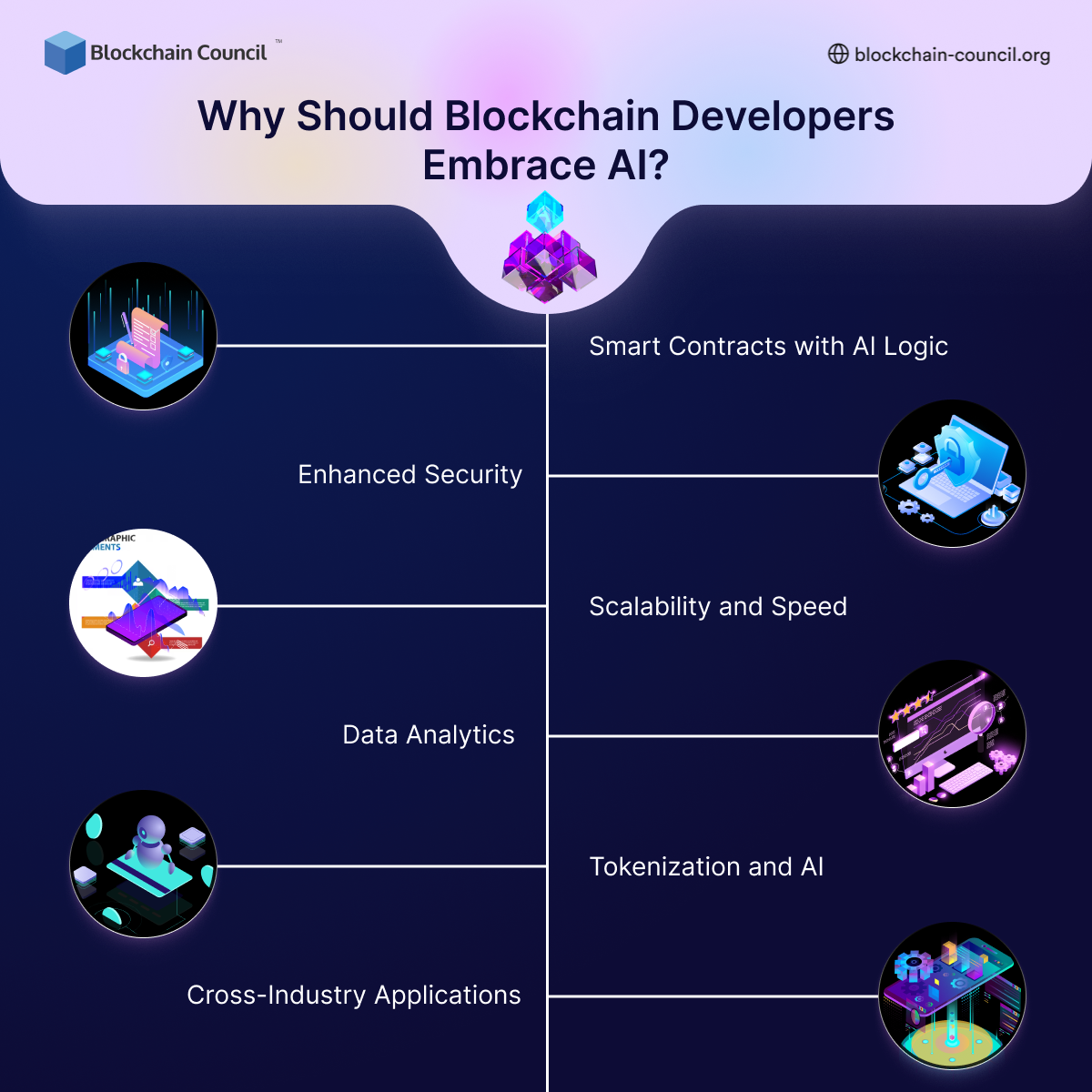
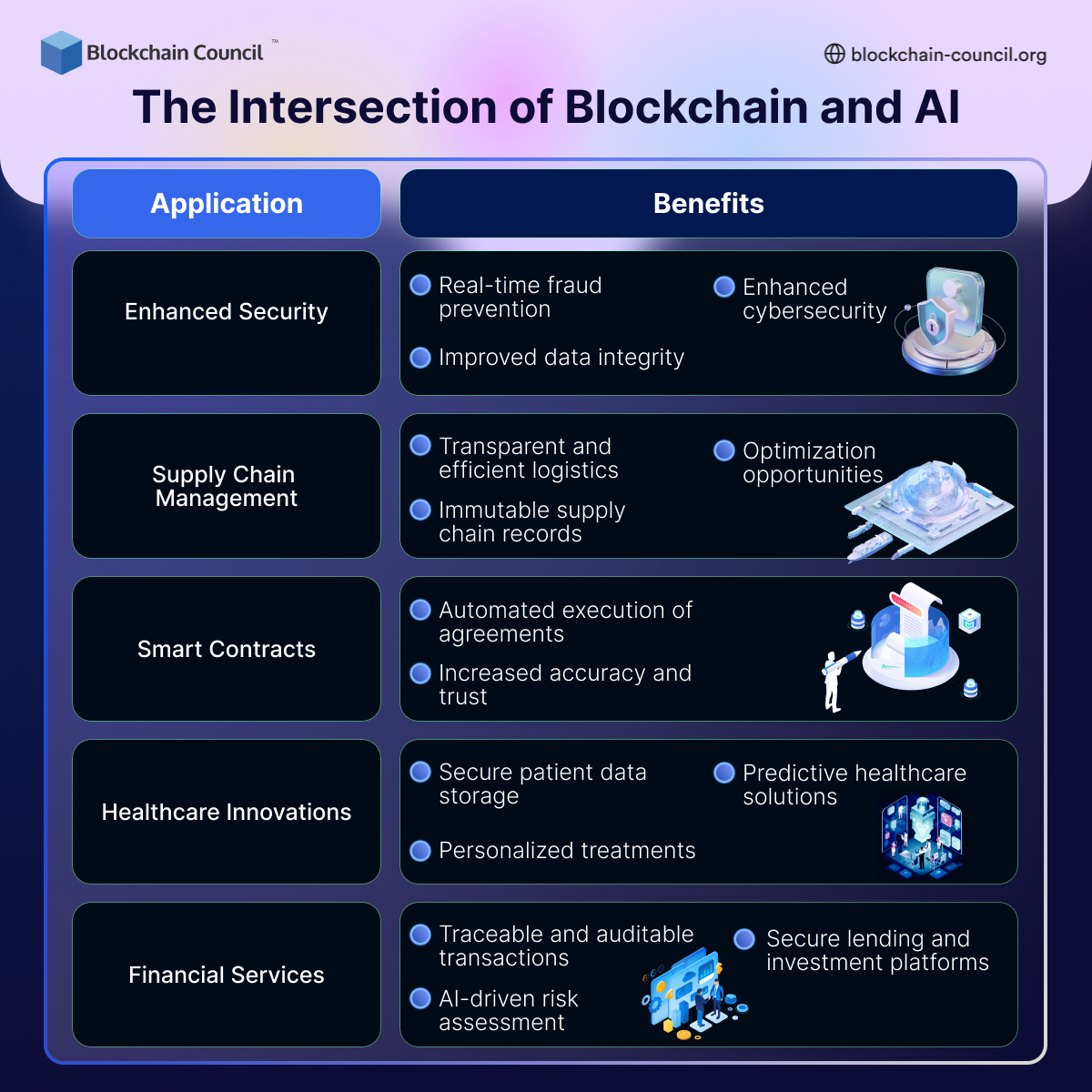
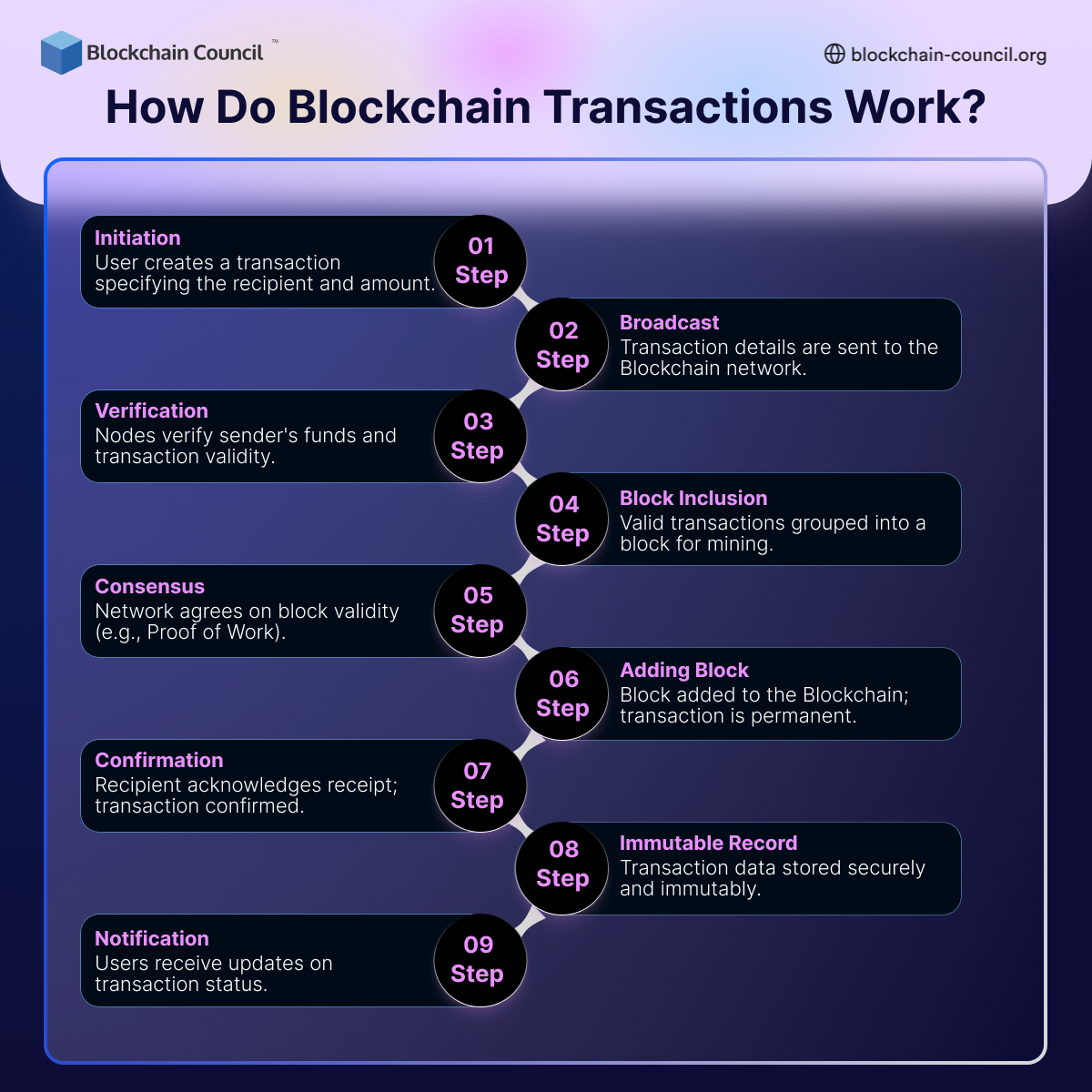
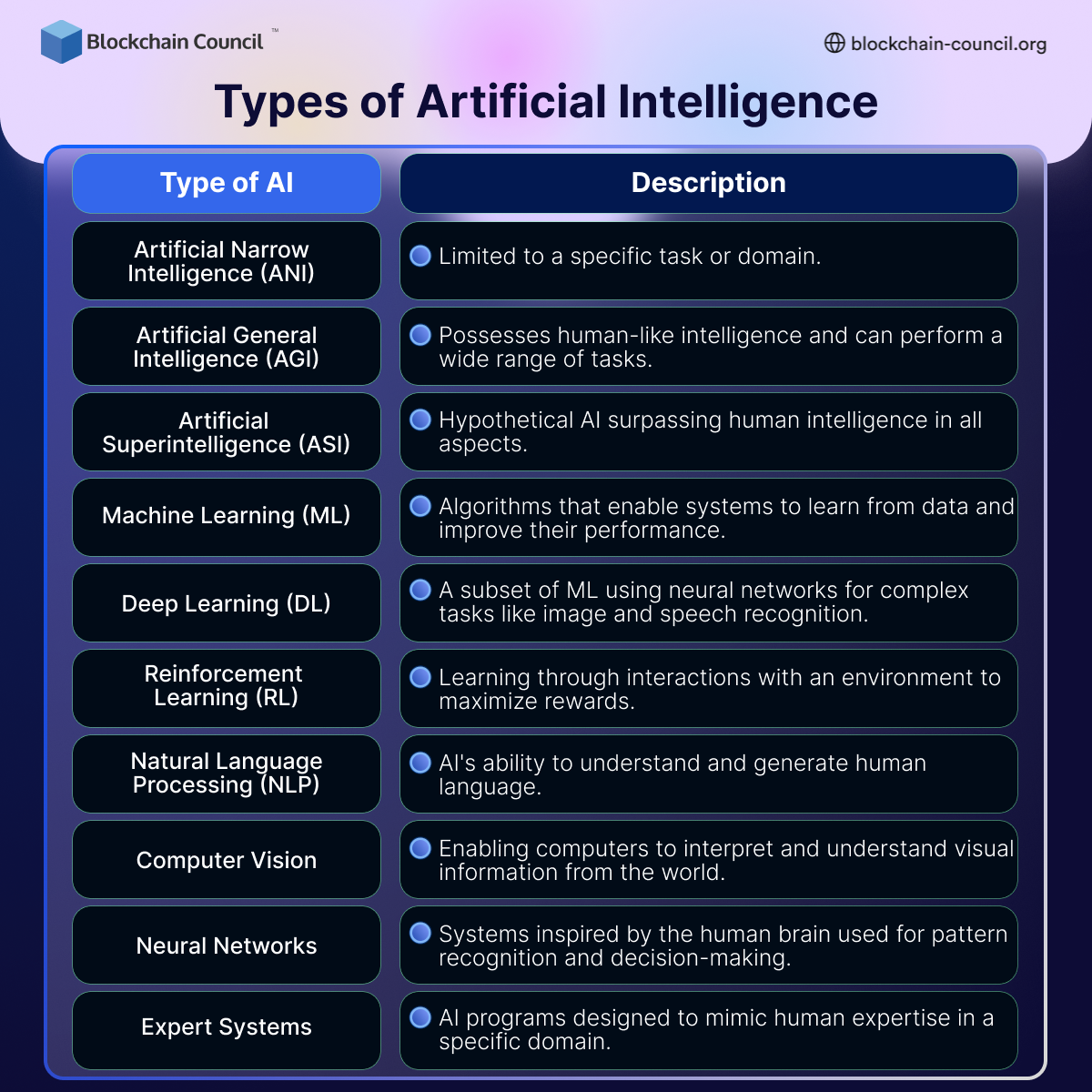
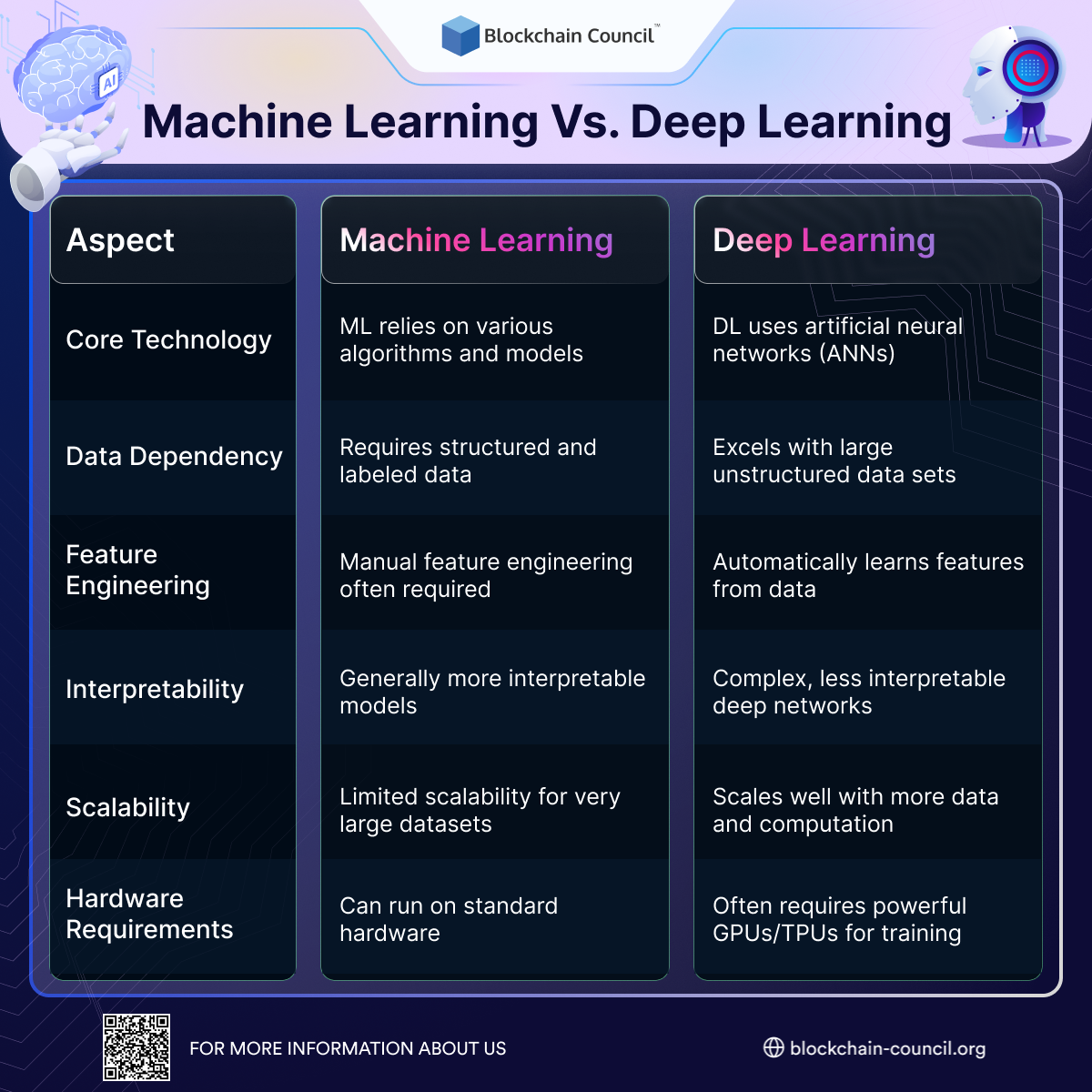
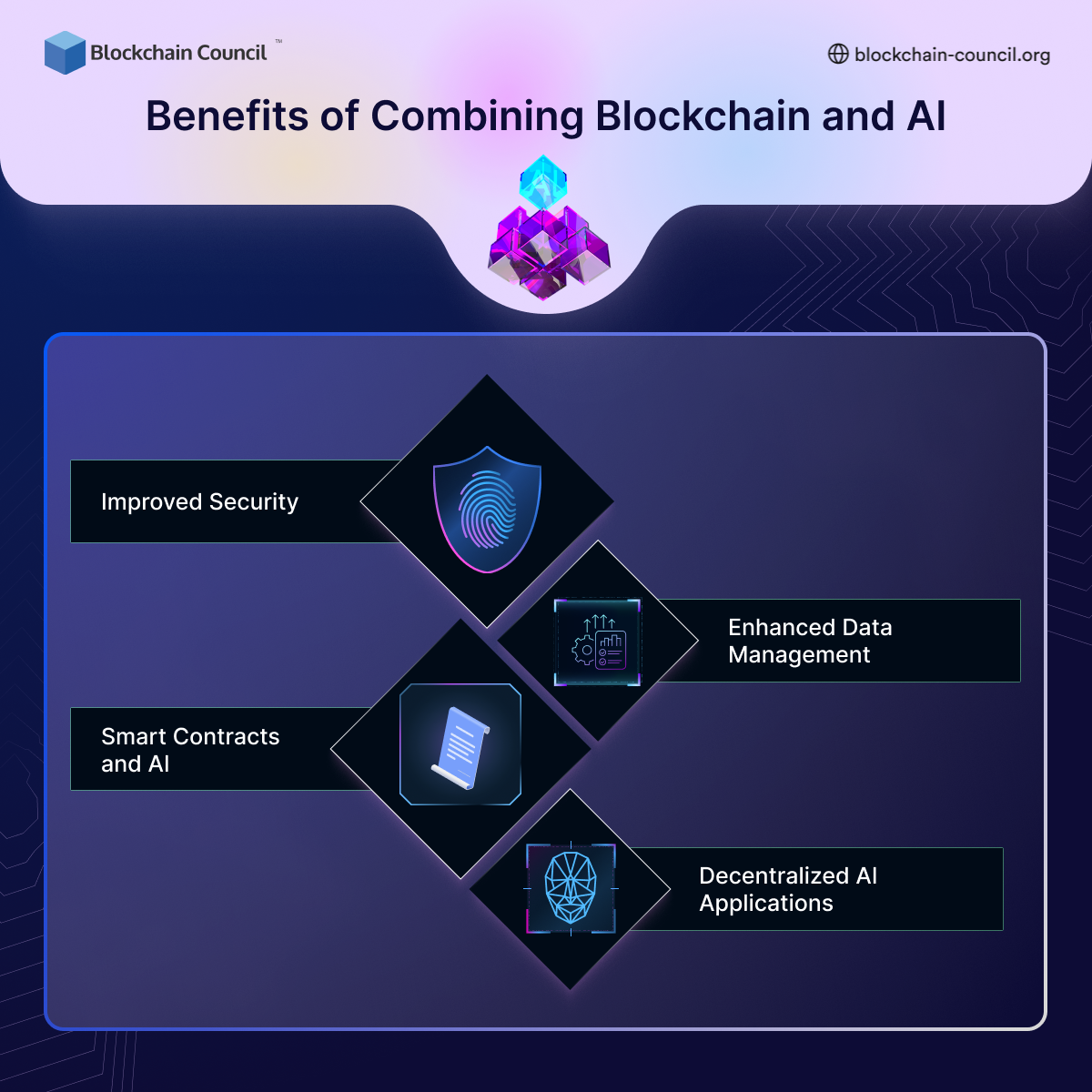
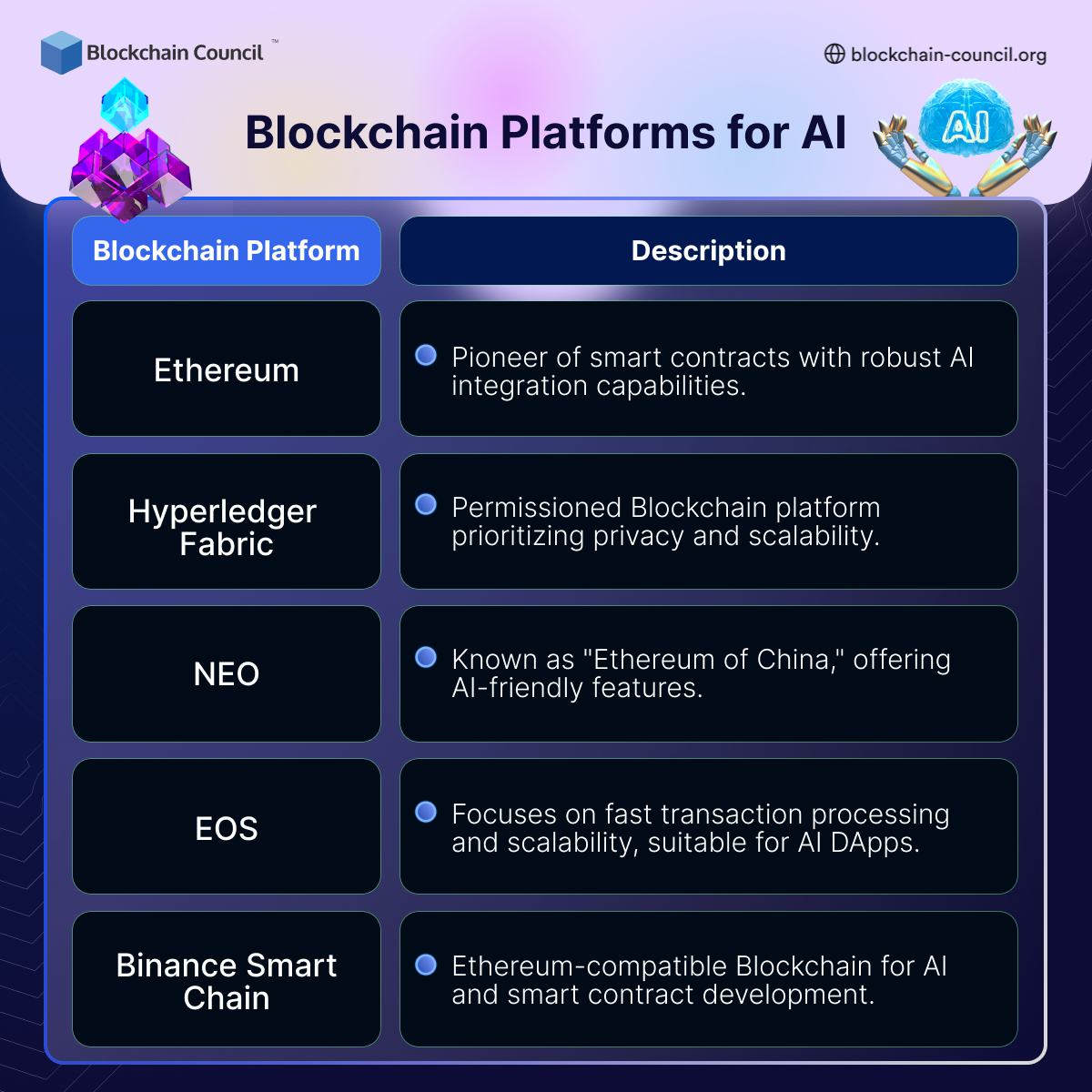
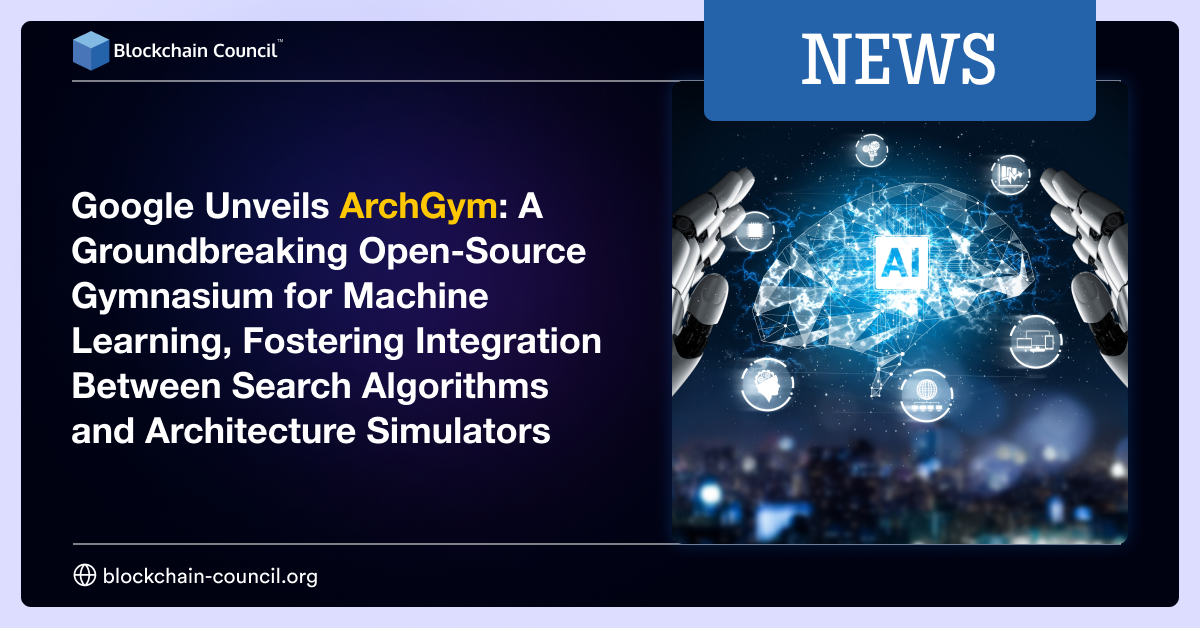

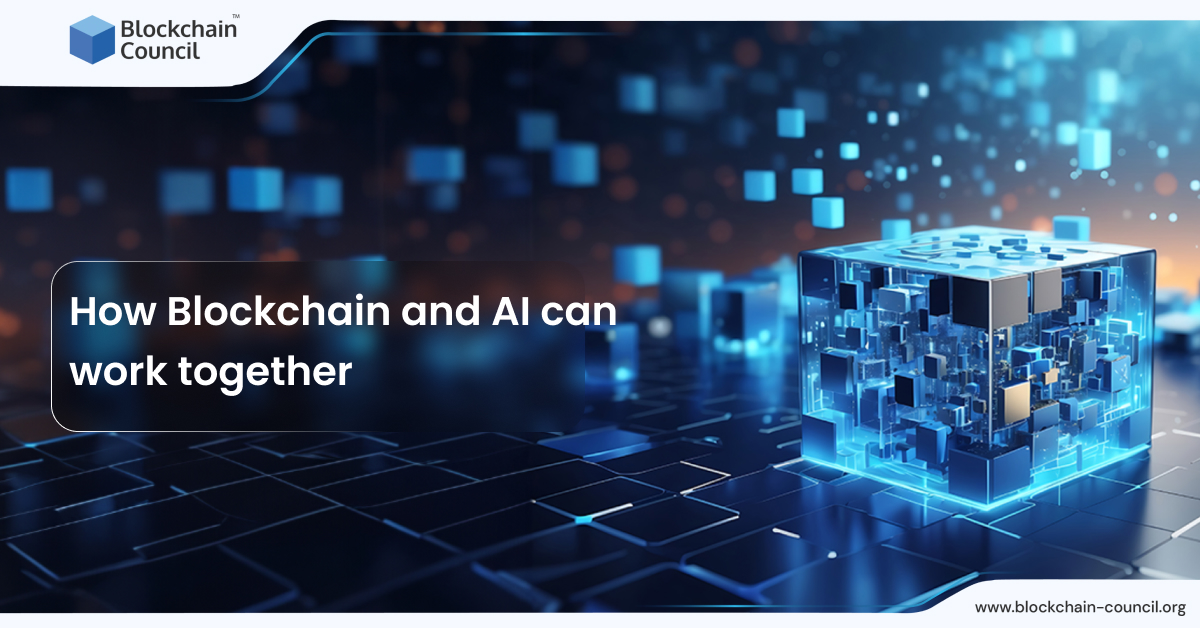
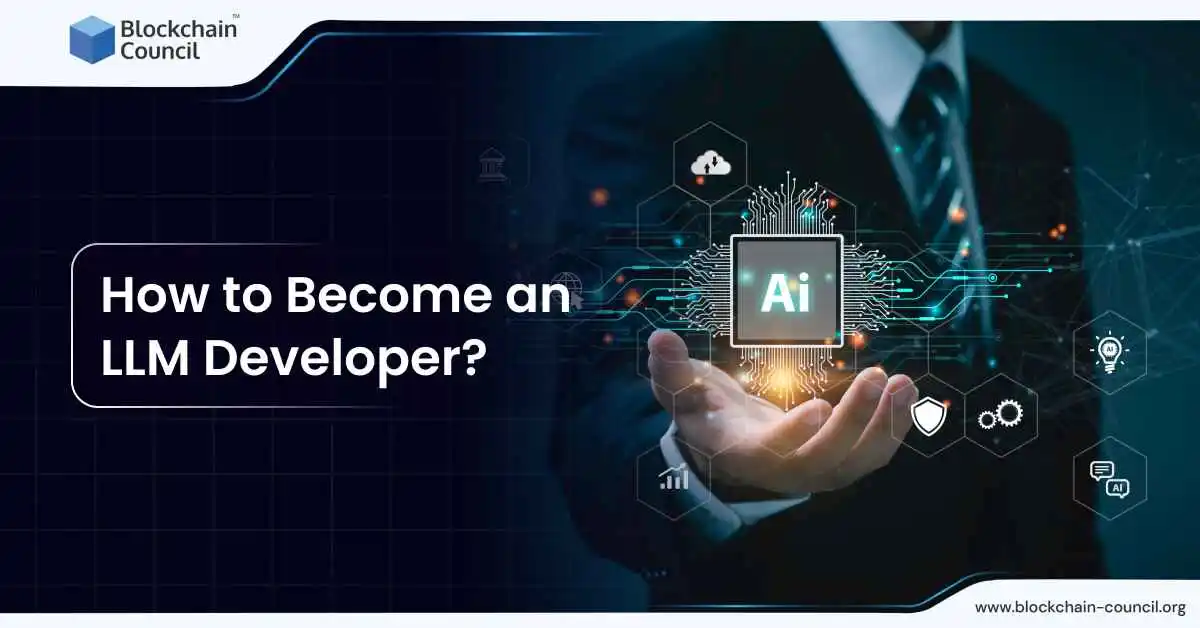
 Guides
Guides News
News Blockchain
Blockchain Cryptocurrency
& Digital Assets
Cryptocurrency
& Digital Assets Web3
Web3 Metaverse & NFTs
Metaverse & NFTs
